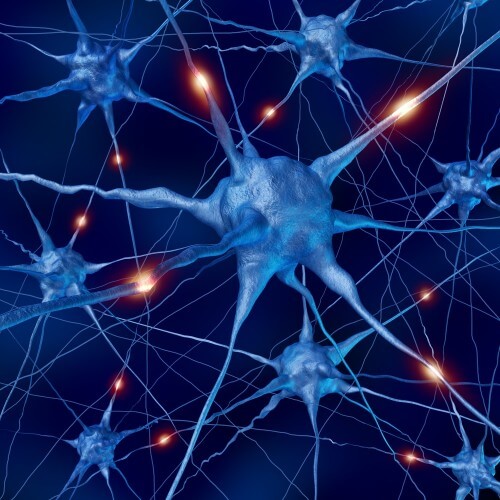A new explanation for the decline in learning ability: not cell death but communication difficulties between the hippocampus cells in the brain

By Yanai Ofran, Haaretz
It was actually Elisha ben Abuya, the man who in his old age became "another", who said "The old man who learns what does he resemble? In ink written on erased paper."
This feeling is also familiar to those who worry about their mortgage more than their old age pension. As the years go by, so does the ability to learn. Many researchers tend to attribute cognitive decline to the death of brain cells. But a new study published at the beginning of last month in the Journal of Neuroscience points to another factor. If the authors of the study are right, it is possible that the treatment of this deterioration is simpler than it was commonly thought.
With age, neuroscience textbooks explain, the number of cells in the brain steadily decreases. While the old cells die slowly, new brain cells seem to be almost never formed. Cell depletion, it is accepted, is the main cause of cognitive decline, which often worsens with age.
This seems to be the explanation for some of the problems of old age. Parkinson's disease, for example, causes - among other symptoms - a deterioration in motor skills. And it is true that in Parkinson's patients a considerable depletion of the number of brain cells in the areas responsible for motor activity was observed. But the new research suggests that the decline in learning ability with old age is an entirely different story. This decrease, suggest the researchers led by Theresa Smith from the Mount Sinai School of Medicine in New York, is mainly due to communication problems between living brain cells and not from the lack of dead brain cells.
For many years, scientists have been looking for the area of the brain where extreme changes cause the gradual decline in learning ability, which begins almost at birth. For a child, for example, one sabbatical year from the parents is enough to acquire a foreign language at the level of a mother tongue. For some reason, close to the age of 14, this ability disappears and acquiring a new language becomes a long and frustrating task, the results of which are never perfect. Psychological studies confirm that the deterioration continues over the years not only in language learning but on all fronts. On average, learning ability decreases as age increases.
The problem is that unlike, for example, the heart rate, which is controlled by a certain area of the brain, or even the visual system, which despite its complexity, it is possible to point out the areas of the brain that are responsible for it, the "ability to learn" involves almost all parts of the brain. Where, then, should one look in the brain for the changes that can explain these findings? One natural candidate was the hippocampus: a sort of relay station that relays information to and from the cerebral cortex - the brain's supercomputer. Many studies prove that the hippocampus plays a key role in learning. But repeated attempts to locate numerical depletion of
The hippocampus cells simultaneously with the cognitive weakening typical of old age failed, despite experiments and tests in mice, rats, monkeys and humans. In all of them, it turned out, abilities deteriorate with old age; But no correlation was found between the deterioration and the death of the hippocampal cells.
Following all these studies, researchers concluded that the explanation may not lie in the hippocampus or that it is not related to the death of brain cells. Smith and her partners nevertheless bet on the hippocampus. The ability to learn is clearly related to the ability of brain cells to communicate with each other. Smith hypothesized that it is the ability of brain cells to talk to each other that is impaired over time. But how can this ability be measured?
The brain cells pass information between them using small bubbles that they spray on each other. Each bubble contains molecules carrying a message (neurotransmitters), which cause chemical changes in the target cell according to the message they carry. The bubble formation process involves several types of proteins. You can check the amount of these proteins in the cell and thus determine the number of bubbles the cell can produce. Such a test actually measures the cell's ability to transmit information to other cells.
The researchers tested the learning abilities of mice of different ages and then tested the ability of the hippocampus cells in the brains of those mice to transmit information. It turned out that in aging mice, in which a deterioration in learning ability was found, a decrease in the ability of the hippocampus cells to transmit information was also usually found. The researchers' conclusion is that the cognitive deterioration characteristic of old age is mainly due to disturbed communication between the cells.
The new discovery raises great hopes. One professor even said in a press interview that the research is "crazily exciting". There is reason to be excited. Cell death, this is the accepted explanation today, is irreversible and difficult to treat. On the other hand, the communication problems between cells are seen as simpler. There is probably a basis for the assumption that it will be possible to solve them with medicinal means.
* At the time, the Hidan website belonged to the IOL portal from the Haaretz group.
